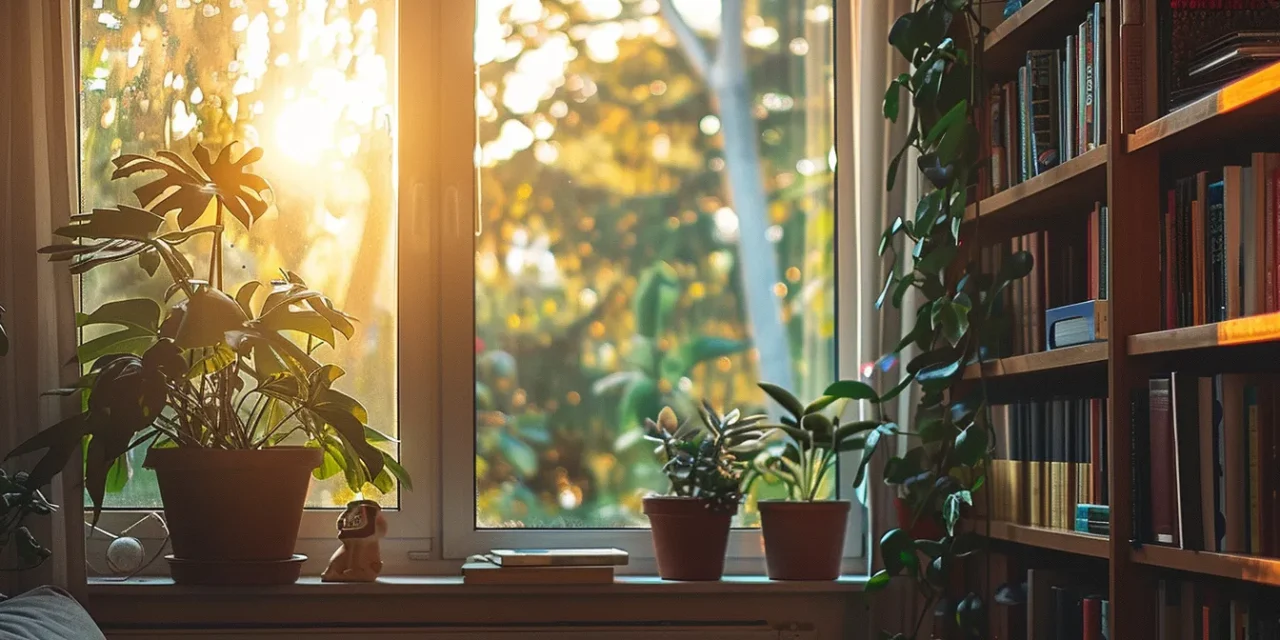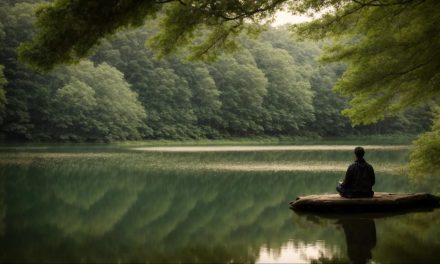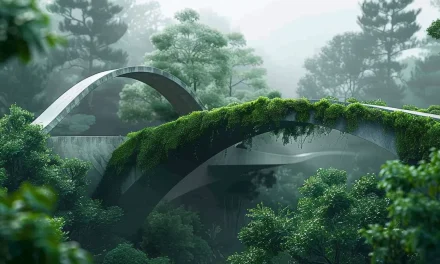Table of Contents
ToggleEssential Guide to Designing Your Dream Tiny Home
Tired of the relentless accumulation of belongings and the high cost of traditional housing? Designing a tiny home might just be the innovative solution you’ve been searching for. This guide will navigate you through key considerations, from optimizing your floor plan to selecting materials that balance quality with price. We’ll delve into creating multifunctional spaces that make your kitchen, room, and bathroom not only stunning but highly practical. As you read, you will learn how to craft a home that’s both cost-effective and tailored to your lifestyle, solving the common dilemma of sacrificing comfort for economy in small-scale living.
Understanding the Tiny Home Lifestyle

Embracing the tiny home lifestyle means more than a reduction in square footage; it’s a deliberate choice to simplify life. As a designer, I’ve seen firsthand the benefits of downsizing your living space, from the ease of maintenance to the intimacy of a cozy cottage bedroom. However, the journey to compact living isn’t without its hurdles. Misconceptions about the practicality of tiny homes persist, and careful consideration of your needs is paramount. Up next, we’ll dispel myths, ponder key factors before the transition, and begin crafting your dream tiny house design.
Benefits of Downsizing Your Living Space
As a professional in the design arena, I’ve observed that opting for a tiny home often leads to a significant decluttering of both physical and mental space. For instance, in Idaho, where sprawling properties are common, a shift towards tiny living can reduce maintenance tasks, freeing up time and resources. By minimizing your inventory of belongings and streamlining your lifestyle, you also minimize the distractions that keep you from enjoying moments that matter.
Incorporating a tiny home design does not mean sacrificing amenities. Take it from someone who has designed compact spaces in places like Oklahoma: even with a smaller overall footprint, you can still relish a well-equipped kitchen or a luxurious shower. This intentional scale-down promotes an inventive use of space and resources, encouraging a balance of functionality and simplicity which is at the heart of the tiny home philosophy.
Common Misconceptions About Tiny Homes
One common misconception I encounter as a designer is the belief that minimalism, a core component of tiny home living, equals stark or unimaginative design. In my experience, minimalism in tiny homes is about making intentional choices, not limitations. Often, a minimalist approach means utilising innovative construction techniques that maximize space and enhance functionality. Glass features are a prime example; by incorporating large windows or even retractable glass walls, residents can break the visual constraints of a small footprint, creating an airy, open atmosphere that belies the tiny square footage.
Another misconception is that tiny homes lack the structural integrity and features of traditional homes. This simply isn’t true. For instance, just because a home is tiny doesn’t mean it can’t have a robust roof system or a welcoming porch. Having designed numerous tiny homes, I’ve incorporated durable materials and cutting-edge building methods that ensure longevity. Moreover, these homes are often outfitted with elements that prioritize energy efficiency and sustainability, reflecting not just a trend, but a conscientious lifestyle choice that resonates with many prospective homeowners today.
Factors to Consider Before Making the Transition
When considering the transition to a tiny home, the functionality of essential spaces such as the bathroom and kitchen must be top of mind. In designing a Louisiana-style tiny home, I’ve seen clients prioritize a well-planned kitchenette that maximizes efficiency while providing the culinary prowess of a full-sized kitchen. Similarly, innovations in compact toilet solutions can optimize bathroom space without compromising on comfort or hygiene standards.
It’s also crucial to consider the climatic demands of your region. In a place like Arkansas, having a strategically positioned window can facilitate ventilation and enhance natural lighting, reducing reliance on artificial cooling and heating. From my professional experience, understanding these regional nuances plays a significant role in crafting a tiny home that is both environmentally sustainable and conducive to your well-being.
Living with less brings clarity to one’s values. Let’s take that clarity into crafting the blueprint for your ideal tiny home.
Planning Your Dream Tiny Home

Entering the design phase of your tiny home requires a clear mind and focused planning. My approach begins with identifying your needs and priorities, ensuring every square foot reflects your lifestyle. I’ll guide you through setting a budget that includes financing, the intricacies of tiny home plumbing, and the critical choices around sleeps and comfort. Selecting the right location for your tiny house comes next, followed by the integration of sustainable practices, essential for eco-friendly living. Each step is crafted to deliver a home that truly belongs to you.
Defining Your Needs and Priorities
In my professional journey as a designer, I’ve learned that recognizing and articulating your priorities is the cornerstone of creating your dream tiny home. For example, if a spacious living area for social interaction is a priority, designing a multi-functional space that transitions smoothly from a home office to a social lounge is key. This understanding allows me to tailor each square inch to reflect your lifestyle, ensuring that the final design isn’t just a space, but a truly personalized home.
Many customers come to me with a vision that extends beyond the walls of their tiny home, possibly envisioning a compact garage for their vehicle or workshop. Through conversations and collaborations, and sometimes even drawing inspiration from social media trends that align with their dream, I design spaces that serve dual purposes, marrying functionality with customer aspirations. It’s crucial that every design decision enhances the alignment of the home with your distinct way of living.
Setting a Realistic Budget
In my experience as a designer, establishing a realistic budget is crucial for smoothly transitioning to a tiny home. This means forecasting not just the cost of the bungalow itself, but also factoring in the price of necessities such as a compact, energy-efficient vacuum cleaner that fits perfectly into a minimized living room. I guide my clients to monitor sales closely and opt for deals on high-quality wood and other materials, which can significantly affect the overall cost without compromising on aesthetic or durability.
Having aided numerous individuals in their tiny home endeavors, I’ve seen the importance of accounting for every aspect of construction and design. A budget should reflect the true cost of living in a reduced space, acknowledging ongoing expenses from utility bills to maintenance. Investing in durable, multi-functional furniture, for example, often comes with a higher upfront cost but saves money in the long run, negating the need for frequent replacements and providing lasting value in a compact living environment.
Selecting the Ideal Location
In my design practice, I’ve observed that selecting the right location for a tiny home is a decision that should be informed by both environmental and personal lifestyle factors. For instance, if natural light is of paramount importance to you, finding a site that accommodates a south-facing skylight can transform your tiny home experience. This placement not only caters to the need for brightness but can also contribute to thermal efficiency, reducing your energy consumption.
I’ve advised clients that the selection of a location goes beyond the allure of scenic views; it should consider practicality in equal measure. A perfect spot is where serenity meets accessibility, allowing for a skylight to not only illuminate your home but also to frame the stars without the glare of city lights. Proximity to essential services and community ties are also key considerations, ensuring that your tiny home supports a sustainable and connected lifestyle.
Incorporating Sustainable Practices
In my experience designing tiny homes, the incorporation of sustainable practices is both an environmental imperative and a fundamental aspect of living small. For example, I recommend the use of renewable materials like bamboo flooring and the installation of solar panels, which not only reduce carbon footprints but also lead to long-term financial savings for homeowners. My role is to design a home that is not merely an abode but a statement of conscientious living.
Water conservation is another key element of sustainability in tiny home design. I often work with clients to install rainwater harvesting systems and greywater treatment solutions that effectively minimize water waste. These features, complemented by drought-resistant landscaping choices, serve to create homes that not only resonate with eco-friendly values but also thrive in their natural environments, contributing to a greener future.
Now that the foundation of your tiny home dream is set, it’s time to craft the interior where every inch counts. Let’s forge ahead into the realm of design, where function meets beauty in the most unexpected ways.
Designing a Functional and Beautiful Space

In designing a tiny home, an efficient floor plan forms the foundation of maximized space utilization. With careful consideration, I integrate storage solutions and organize living areas to maintain functionality and flow. Selecting multipurpose furniture is key in a small living space—each piece must serve various needs while reducing clutter. Lastly, the aesthetic appeal of your tiny home is paramount; it’s about creating a space that’s both lovely to look at and a joy to live in. These elements, when expertly combined, transform a tiny house into a dream home.
Creating an Efficient Floor Plan
In my practice as a designer, I’ve learned that an efficient floor plan is the cornerstone of tiny home design. It’s about making intelligent use of every inch. For example, by combining the dining area with the living space, one can create a versatile space that accommodates daily activities, from mealtime to relaxation, without feeling cramped or disorganized. In these designs, functionalities often overlap in a harmonious manner, leading to a home that’s as efficient as it is inviting.
When crafting floor plans for tiny homes, it’s my priority to consider the flow of movement and the importance of natural light. By strategically positioning windows and skylights and eliminating unnecessary walls, I can enhance the spaciousness of small interiors. I ensure that storage solutions are built into the design, such as under-stair compartments or lofted bed frames with integrated closets, to maintain a decluttered, aesthetically pleasing environment that satisfies both practical needs and personal taste.
Maximizing Storage and Organization
In my work with tiny homes, storage and organization are not just aspects of design, they are the keys to liveable and enjoyable spaces. I encourage clients to think vertically; loft beds and high shelving take advantage of upward space, keeping the floor area open and uncluttered. Clever built-ins, like a bench that houses storage bins or a fold-down desk that tucks away, optimize the usability of each area without sacrificing charm or comfort.
During my design process, I emphasize the needs of the homeowner in each decision. Custom cabinetry that caters to specific hobbies or lifestyles can make even the smallest tiny home feel tailor-made. For instance, a client with a penchant for cooking might benefit from a magnetic spice rack or a retractable pantry, allowing for easy access while maintaining a streamlined kitchen space, demonstrating that smart design is directly correlated to an effective and personalized tiny home experience.
Selecting Multipurpose Furniture
In my design practice, selecting multipurpose furniture is a cornerstone in maximizing the functionality of a tiny home. A sofa that transforms into a bed not only saves space but provides the flexibility to accommodate overnight guests without the need for a separate guest room. Such pieces are not merely space savers but also investment pieces that enhance the adaptability of living areas, ensuring that every square inch is put to good use.
I advise clients to choose furniture that echoes their daily routines and personal style, reinforcing the notion that living small does not equate to living without. A dining table that doubles as a workspace, for instance, offers a seamless transition between mealtime and work hours. By carefully selecting these kinds of versatile furnishings, I help homeowners craft spaces that are as efficient as they are stylish, reflecting careful consideration and intelligent design in every aspect of their tiny homes.
Enhancing the Aesthetic Appeal
In my architectural experience, enhancing the aesthetic appeal in tiny home design involves a delicate balance between style and function. When selecting finishes, I choose ones that not only endure the rigors of daily life but also echo a client’s personal taste. The thoughtful incorporation of color, texture, and materials can evoke an expansive feeling in a compact space, ensuring that residents enjoy not just the utility but the beauty of their homes every day.
I’ve observed that the charm of a tiny home is often amplified by its unique details. Custom millwork, statement lighting, and strategic decor placements are elements I employ to craft a space that feels both bespoke and homely. By focusing on quality over quantity and investing in statement pieces that speak to the homeowner’s personality, I create tiny homes that are as visually appealing as they are comfortable and practical.
Design triumphs when it bridges form and function. Next, we steel ourselves to select materials and methods that endure and inspire.
Choosing Materials and Construction Methods

In my journey to sculpt dream tiny homes, I’ve honed the art of selecting the right materials and understanding the nuances of construction methods. Eco-friendly building materials have risen to the fore, balancing sustainability with aesthetics. Deciding between DIY versus hiring professional builders often hinges on skill level and project scope, while the choice between prefabricated components and custom builds can significantly influence the project timeline. And let us not overlook durability and maintenance—key considerations that determine the longevity of your home. Each of these factors weaves into the next, creating a comprehensive fabric of decision-making crucial to bringing your tiny home vision to life.
Exploring Eco-Friendly Building Materials
In my profession, the inclusion of eco-friendly building materials is not just a passing fad, but a pivotal component of the tiny home lifestyle. Sustainable materials like reclaimed wood add a story of conservation to your home while bamboo flooring offers durability alongside its quick regrowth rate, making it a responsible choice. My designs often incorporate these materials, successfully blending environmental stewardship with the sought-after aesthetic appeal that aligns with my clients’ ethics and design sensibilities.
Selecting low-impact construction materials also translates into energy savings over the lifespan of your tiny home. Insulation made from sheep’s wool, for example, is not only an excellent thermal barrier but also biodegradable, supporting your efforts to minimize ecological footprints. I’ve advised homeowners on integrating such materials, ensuring their tiny abode is not only ecologically conscientious but also cost-efficient in the long term.
Weighing DIY vs. Professional Builders
In my experience, deciding between a do-it-yourself approach and enlisting professional builders for your tiny home project is a pivotal decision. DIY can offer personal satisfaction and potential cost savings, but it requires a substantial investment of time and a level of craftsmanship that not everyone possesses. On the other hand, professionals bring expertise and efficiency to the task, ensuring that the build meets structural codes and quality standards, which is crucial for your home’s safety and longevity.
Through personal involvement in various projects, I’ve observed that professional builders provide peace of mind through warranties and a proven track record. However, a DIY endeavor allows for greater customization at each step, which can be especially rewarding. Ultimately, the choice hinges on your confidence in your abilities, the complexity of your design, and your budgetary constraints. Carefully weigh these considerations to ensure your tiny home journey is as smooth as it is fulfilling.
Understanding Prefabricated vs. Custom Builds
In my role as a tiny home designer, I’ve observed that the decision between prefabricated builds and custom construction is a defining moment for many of my clients. Prefabricated homes offer a faster route to move-in day, with components manufactured off-site and assembled quickly on your chosen lot, providing a practical solution for those with time constraints. However, they may limit customization, shaping your space through predetermined designs that can be challenging to alter.
Custom builds, in contrast, allow for a greater expression of personal taste and an exact fit for your lifestyle. I work closely with homeowners to translate their vision into architectural reality, considering every detail from the layout to the finishes. While this process requires more time and typically a larger budget, the result is a one-of-a-kind home, tailor-made to every specification, and often becomes a true reflection of the owner’s identity.
Considering Durability and Maintenance
In my experience as a designer, the selection of durable materials and consideration of maintenance requirements are pivotal for the longevity of a tiny home. Opting for high-quality exterior finishes that withstand harsh weather conditions, such as galvanized steel or treated wood, can prevent frequent repairs and reduce long-term upkeep expenses. Inside, choosing easily cleanable surfaces and resilient flooring options like luxury vinyl plank ensures that your tiny home remains pristine with minimal effort.
Moreover, from the foundations to the roofing, emphasizing robust construction methods is critical to ensuring that your tiny home can endure the test of time. As I guide my clients through the material selection process, I advise them to consider products with longer life spans, such as metal roofing over asphalt shingles, not only for their endurance but also for their ease of maintenance. A well-constructed tiny home designed with these principles in mind offers peace of mind and stands as a lasting sanctuary.
With the right materials in place, our structure stands strong; now we turn our focus indoors. Essential systems and utilities await to breathe life into the shell we’ve crafted.
Implementing Essential Systems and Utilities

In my experience of crafting tiny homes, essential systems and utilities are a vital component, ensuring these diminutive dwellings remain both functional and sustainable. From the choice between off-grid versus on-grid utilities to the intricacies of water supply and waste management solutions, these elements are foundational. Moreover, selecting the right energy sources and electrical systems, along with determining efficient heating, cooling, and ventilation options, are critical considerations for creating a comfortable and eco-friendly home.
Off-Grid vs. On-Grid Utilities
Choosing between off-grid and on-grid utilities is a crucial decision in the design of your tiny home. Opting for off-grid living often involves solar panels, composting toilets, and rainwater collection systems, offering independence from traditional utility services. In my professional experience, this route is particularly appealing for those seeking self-sufficiency and a reduced environmental impact, but it requires a thorough understanding of energy management and system maintenance.
Conversely, connecting to on-grid utilities provides the reassurance of consistent access to electricity, water, and sewage services, which is essential for many homeowners. I have guided clients through the complexities of utility hookups, ensuring their tiny homes meet local regulations while balancing their desire for connectivity with the potential for higher ongoing utility costs. The decision ultimately hinges on the values and lifestyle of the homeowner, underscoring the importance of aligning your tiny home design with your long-term objectives.
Water Supply and Waste Management Solutions
In my career as a tiny home designer, I’ve understood the critical nature of designing water supply and waste management systems that are reliable and sustainable. Options like installing a rainwater collection system or equipping a home with a water-efficient plumbing system have provided my clients with practical solutions that cater to their eco-conscious lifestyle. These systems require thoughtful planning to ensure adequacy and reliability, particularly in regions where water resources can be scarce.
Addressing waste management, I’ve integrated compact and odorless composting toilets into my tiny home designs, which has significant ecological benefits and reduces water usage. Smart design decisions like these can redefine your living experience, transforming what might seem like a limitation into a sustainable and functional advantage. In doing so, it’s essential to familiarize oneself with local regulations and environmental guidelines to ensure that these tiny home solutions are not just innovative but also compliant.
Energy Sources and Electrical Systems
In my journey of tiny home design, I’ve highlighted the importance of selecting the right energy sources and electrical systems to ensure efficiency and sustainability. Solar energy, for instance, is a hugely popular choice for tiny homes, providing a renewable and cost-effective power source that marks a step towards green living. I’ve successfully integrated solar panels into many projects, coupled with battery storage solutions, to provide a reliable electrical system that caters to the homeowner’s energy needs without being tethered to the grid.
My clients often express concerns about the reliability and adequacy of their tiny home’s electrical system. I address this by carefully planning the electrical layout to optimize energy flow and incorporate energy-efficient appliances. Implementing LED lighting and energy-saving practices ensures that the tiny home’s demand on power sources remains within sustainable margins. These solutions deliver not only an environmentally friendly energy system but also one that aligns with the efficient and minimalist ethos of tiny living.
Heating, Cooling, and Ventilation Options
In my professional practice, I emphasize the need for efficient HVAC systems in tiny homes to ensure comfort in all seasons. Installing systems such as mini-split air conditioners and heaters can provide a compact solution that adapts to both cooling and heating needs. This sort of integration optimizes interior space and energy use, critical in a tiny home where every inch and watt counts.
I also take into account the importance of proper ventilation to maintain healthy air quality in tiny homes. By strategically positioning windows, installing ceiling fans, or incorporating an energy recovery ventilator (ERV), I create living spaces that not only conserve energy but also circulate fresh air effectively throughout the tiny home, which is essential for a comfortable and sustainable living environment.
Systems in place, your tiny home stands ready, both sturdy and efficient. It’s time to breathe life into its spaces, crafting a home that is uniquely yours.
Personalizing Your Tiny Home

Creating a tiny home that captures your unique style and needs is an essential step in making the space truly yours. I’ll impart design ideas that not only enhance small spaces but also ensure they reflect your individual flair. Emphasizing outdoor living areas adds an extra dimension to your home, effectively expanding your living quarters. Plus, anticipating and planning for potential lifestyle changes ensures your tiny house remains a perfect fit for years to come. These elements are crucial for personalizing your tiny home, making it not only functional but also a true reflection of your personality and future aspirations.
Infusing Your Unique Style
In creating your dream tiny home, infusing your unique style is a transformative step. I encourage my clients to reflect their personalities through creative color schemes, custom textiles, and personal artwork. Each element should resonate with who you are, transforming your tiny space into a vibrant canvas that displays your life’s passions and preferences.
During my design process, I facilitate the incorporation of bespoke features that serve as distinct reflections of my clients’ individuality. For instance, intricate tile work or a customized book nook can become signature elements within your tiny home. It’s these personal touches that turn a structure into a sanctuary that is entirely, unmistakably yours.
Design Ideas for Small Spaces
In my role as a designer, I’ve crafted numerous small space solutions that amplify both style and utility. Consider, for example, a Murphy bed installed in the living area; it effortlessly transitions from a comfortable sleeping space at night to a functional piece of furniture during the day, vastly improving the versatility of your tiny home without sacrificing design aesthetic or practical use.
My experience has taught me the importance of light in expanding the perception of space. Strategically placed mirrors can reflect natural light and give the impression of a more expansive room. This simple yet effective design tactic ensures your tiny home feels open and airy, amplifying the beauty and functionality of compact living areas.
Creating Outdoor Living Areas
In my design practice, I’ve seen the transformative impact of incorporating outdoor living areas into tiny homes. By extending your habits of dining, lounging, or gardening to a well-crafted deck or patio, you effectively increase your usable space, which is vital in a compact dwelling. These transitional spaces not only multiply the functionality of your tiny home but also allow you to engage with the outdoors seamlessly, thereby enriching your overall living experience.
I often guide my clients to consider the natural surroundings when personalizing their outdoor areas. For instance, incorporating local stone in a patio design can create a symbiotic relationship with the landscape, or utilizing space-saving vertical gardens maximizes greenery without compromising square footage. These outdoor solutions bring an additional layer of enjoyment and connection to the environment, underscoring the essence of the tiny home lifestyle.
Adapting Your Home for Future Needs
In designing your dream tiny home, it’s essential to consider adaptability for life’s inevitable changes. As someone who has guided countless individuals through the design process, I emphasize the importance of flexible spaces that can evolve with your needs. For instance, incorporating adjustable shelving or convertible furniture can easily transform a home office into a nursery, ensuring your tiny home continues to serve you well into the future.
Moreover, when I work with clients on their tiny home designs, I always discuss planning for aging in place. This might include integrating subtle design features such as wider doorways, smooth flooring transitions, and accessible storage. By considering these elements from the outset, you ensure that your tiny home remains a comfortable and safe living space as your mobility and lifestyle needs evolve over time.
Frequently Asked Questions
What are the key aspects of the tiny home lifestyle?
The tiny home lifestyle emphasizes minimalism, affordability, and sustainability, favoring flexibility and reduced environmental impact over traditional housing’s space and possessions.
How do I start planning my tiny home design?
Planning your tiny home design begins with a clear assessment of your needs, creating a realistic budget, and selecting a functional layout that maximizes your limited space efficiently.
What tips ensure the best use of space in a tiny home?
In tiny homes, maximizing space is pivotal; opt for multifunctional furniture, use vertical storage solutions, and keep designs minimal to avoid clutter.
Which materials are best for tiny home construction?
Optimal materials for tiny home construction include lightweight wood, steel framing, SIPs (Structural Insulated Panels), and recycled materials for sustainability and cost-efficiency.
What utilities are essential for a tiny home?
Essential utilities for a tiny home include water, electricity, heat, and waste management systems, all tailored for space efficiency and sustainability.










